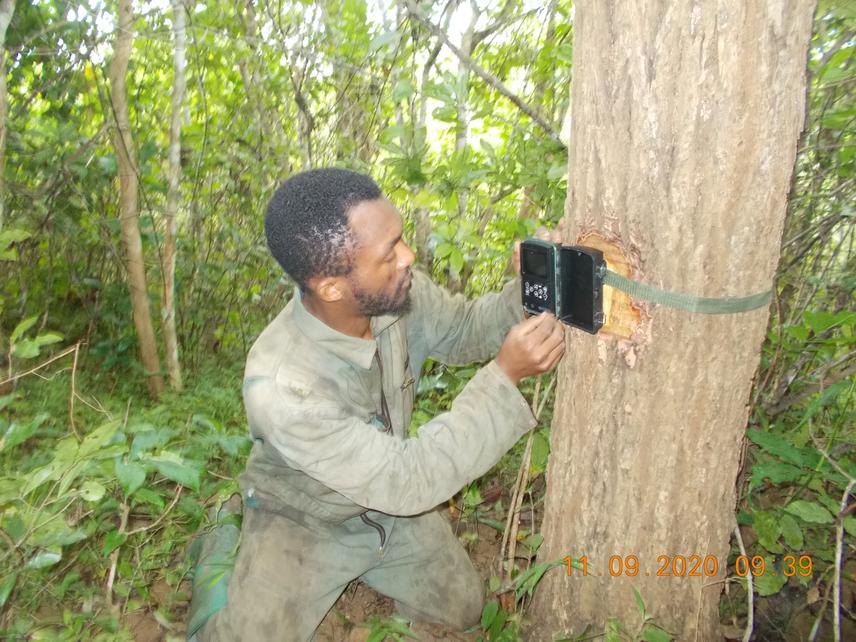Alain Delon Mouafo Takoune
Mbam et Djerem National Park (MDNP) hosts an important giant pangolin (GP) population, which is experiencing diverse threats including poaching and habitat degradation. This situation is driving the GP to the edge of extinction, thus requiring well designed conservation plans and actions to ensure their long-term survival. However, conservation actions have been hampered by the dearth of scientific studies necessary to better target and plan interventions. Among missing data are accurate estimations of the number of individuals remaining in the wild, harvest rates by local communities, and factors affecting these metrics. Having identified these knowledge gaps, we have designed this project, which focuses on MDNP and its environs, to increase our ecological knowledge of the GP, estimate offtake rates, and engage local communities in GP conservation activities.

Specifically, our objectives will be as follow:
1) Quantify the level of pangolin offtake and hunting rates, fate of carcasses (consumed and/or sold) and trapping methods used by local communities within 4 randomly selected villages to guide the development of a sustainable use plan for the site,
2) Determine a) relative abundance indices of GP using line transects and camera traps following disturbances (in and around the park) and habitat types (forest, savannah, ecotone) gradients as well as environmental variables affecting these indices, and b) test the efficiency of LTDS and burrow occupancy rates in estimating GP density,
3) Develop community-based activities to raise awareness on pangolins and restore their degraded habitats to promote their long-term conservation.
We expect the following at the end of this preliminary project:
- Harvest rates and weights of GP and other wildlife species are estimated to enable better planning of behavioural change campaigns and use of resources.
- Relative abundance indices of GP within different habitat types in and around MDNP are determined using both line transects and camera traps,
- Density of GP is estimated using LTDS and burrow occupancy rates and their suitability for estimating density demonstrated,
- Environmental factors affecting relative abundance indices and density estimates are determined to guide conservation efforts,
- Local people are engaged in GP conservation through community-based activities such as conservation education and radio talks on legislation protecting pangolins and other species
- At least 1000 saplings of native trees are planted in pilot plots to restore degraded patches of GP habitat in and around MDNP.